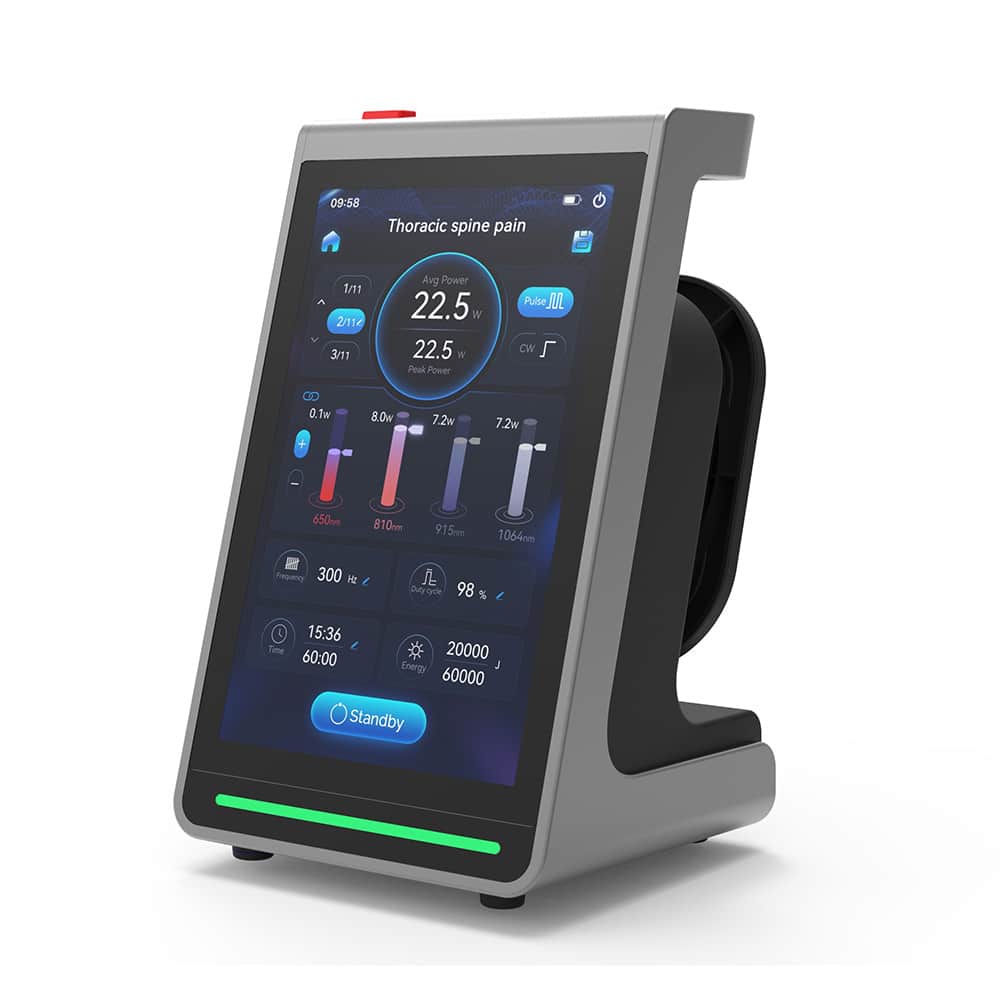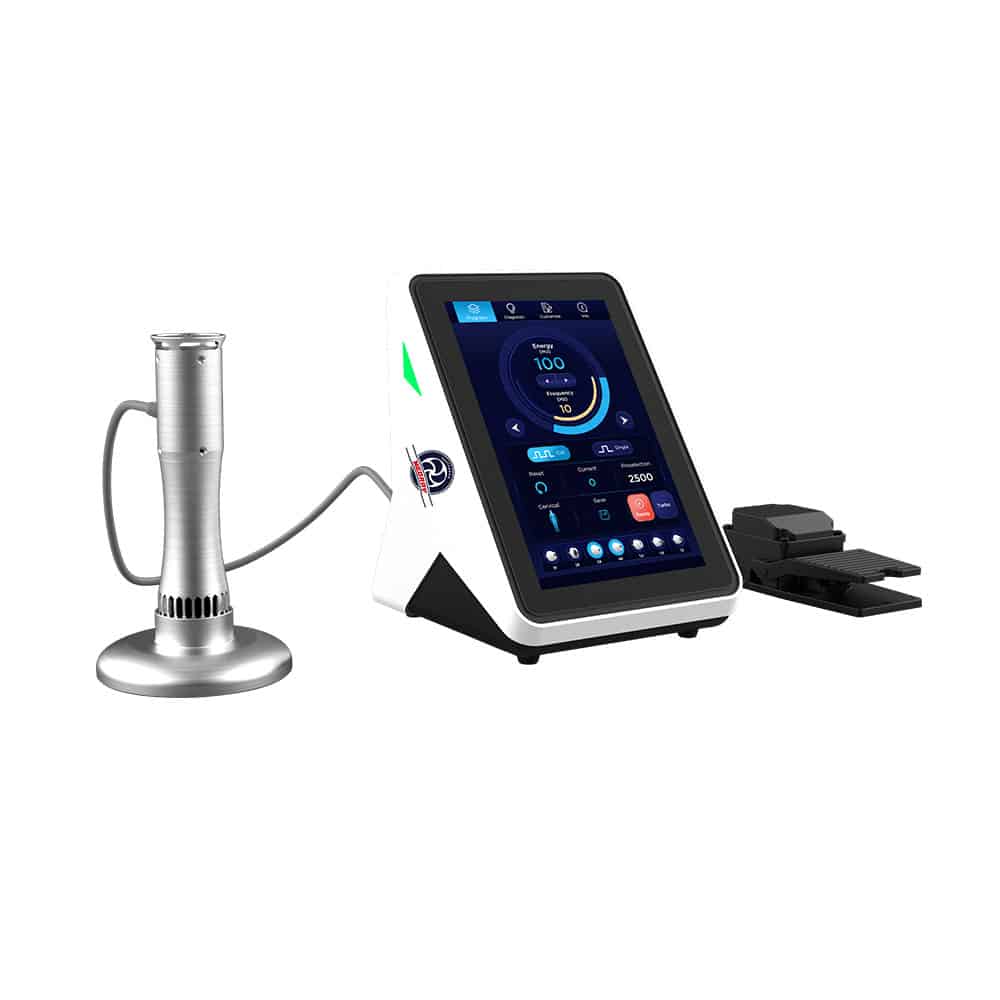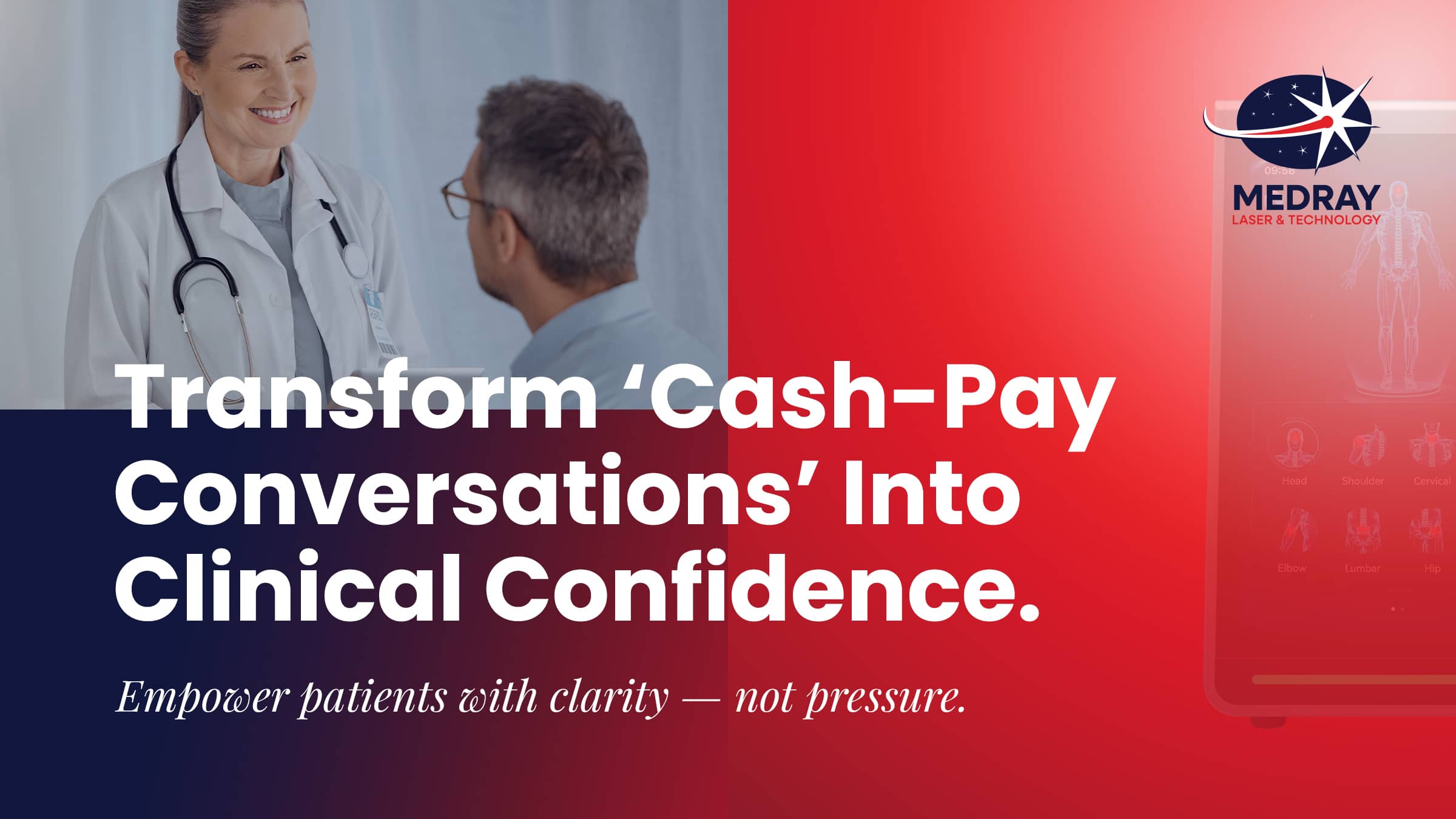How Do You Effectively Offer Non-Covered Services?
For many clinicians and staff, introducing cash-pay add-ons like, or care plans with, laser or shockwave therapy can feel uncomfortable. The concern is that the conversation will come across as a sales-driven transaction rather than a patient-centered solution. Yet patients consistently report that what they value most is transparency and clarity.
When clinicians avoid the topic, patients are left uninformed about beneficial options. When they approach it as a transaction, patients may feel pressured. The solution lies in using a neutral, structured script that explains the service clearly, connects it to the patient’s goals, and respects their autonomy.
What’s the Structure of an Effective Script?
-
Position the Therapies as Standard of Care for Optimal Results
- In our clinic, we’ve found that patients who combine [laser/shockwave] with their core care plan experience faster relief, greater mobility, and longer-lasting results. That’s why we strongly recommend it as part of your care.
- We can absolutely proceed without laser/shockwave, but we often see patients take longer to heal or hit plateaus that we might avoid with this approach.
- Our goal is to give you every possible advantage — faster healing, fewer visits, and less chance of recurrence.
-
Show the Value Beyond Pain Relief
- Many patients only think short-term (“Does this get rid of the pain?”). It is important to frame the discussion in the context of a long-term solution.
- One way to do this is by addressing the discussion like this: “These therapies not only reduce pain and inflammation — they help your tissue actually repair and regenerate. That’s the difference between masking the pain and solving the problem.”
-
Provide a Compelling Narrative Example
- “We had a patient recently who started with just adjustments and rehab, and while they were improving, it was slow going. After adding laser and shockwave, the same condition resolved in half the visits and the patient told us it was the first time they felt truly healed. That’s the difference.”
-
Be Transparent by Addressing Cost and ROI Upfront
- Be transparent but positive:
- “We understand this adds to your care investment, but patients tell us it’s worth every penny for the results they get. Plus, these are often FSA/HSA eligible. Most importantly, it saves time, avoids chronic issues, and may prevent the need for more expensive interventions down the road.”
-
Make It Easy to Say Yes
- Structure it like a care path/plan, not an add-on.
- For example: “Your recommended plan includes 2 visits per week with decompression and rehab. We suggest adding laser or shockwave on those same visits for enhanced healing. You won’t need to stay longer, and our staff handles everything. It’s streamlined, effective, and our best standard of care.”
-
Consistent, Clear Communication at Front Desk/Staff is Critical
- It is important that the communication between the front desk/staff and clinician are consistent.
- When reviewing care plans or financial options front-desk/staff may say something like: “Dr. Johnson included laser/shockwave in your plan because it dramatically improves outcomes for your condition. You’re free to decline, of course — but most patients choose to include it and are really glad they did.”
How Do You Pair the Script With Clinical Flow?
A script is only effective if it ties into clinical reasoning and measurable outcomes. To avoid sounding transactional, always pair the add-on with a relevant functional re-test.
For example:
- If offering shockwave for lateral elbow pain, use grip strength as the re-test.
- If offering laser for an irritable shoulder, use a painful arc.
- Document both the objective change and the patient’s perception.
This ensures the service is not “just an add-on” but a structured part of the visit that contributes to clarity in care.
How Should You Document Non-Covered Services?
- Separate line item for the service on the patient’s chart or billing system
- Time stamps showing time-in and time-out for the modality block
- Patient choice (accepted or declined) noted in one sentence
How Do You Train Staff to Deliver This Consistently?
Consistency is the antidote to awkwardness. Train all staff—front desk, rehab assistants, and clinicians—to use the same neutral language.
Practical training steps include:
- Role play: Practice the script until it feels natural. Authenticity is critical.
- Visual reminders: Post a one-page outline of the four-part script in staff areas.
- Feedback loop: After the first two weeks, review how often the service was offered, accepted, and documented.
How Many Price Points Should You Start With?
Simplicity is key in the beginning. We recommend 1–2 price points per region or time block.
For example:
- Short application (regional laser, targeted shockwave): $40-100
- Extended block (multiple sites or combination care): $60-120
Once the clinic has tracked 20–30 visits, review utilization data to determine whether adjustments are needed. Expanding too early creates confusion; starting simple keeps everything streamlined.
How Do Patients Typically Respond to Cash-Pay Add-Ons?
Patients are generally open to non-covered services when three conditions are met:
- 1. Transparency: They know what the service is, how long it takes, and what it costs. Set expectations from the first discussion.
- 2.Connection to goals: The clinician frames it as a way to support progress, not as a standalone upsell.
- 3.Choice: The patient feels empowered to say yes or no without pressure.
When delivered this way, many patients appreciate having options and are more likely to remain engaged in their plan of care.
Why Should Clinics Track Utilization?
Tracking utilization after 20–30 visits provides objective insight into:
- How often patients accept the service
- Which conditions or regions see the most uptake
- Whether the current price points are appropriate
What Common Mistakes Should Clinics Avoid?
- Avoiding the conversation: Patients can’t choose what they don’t know exists.
- Overcomplicating pricing: Too many tiers confuse patients and staff.
- Inconsistent language: Different staff members explain the service differently, which erodes trust.
- Failing to document: Without clear records, clinics open themselves to compliance risks.
How Do Laser and Shockwave Fit Into a Broader Care Plan?
- Laser therapy provides a non-contact photobiological stimulus that supports circulation, tissue stimulation, and temporary pain relief.
- Shockwave therapy delivers a targeted mechanical input that may be particularly relevant for chronic tendon presentations.
What’s the Bottom Line?
Non-covered services don’t have to feel awkward. With a neutral script, clear documentation, simple pricing, and consistent training, clinics can integrate cash-pay add-ons in a way that patients appreciate.
The key is to keep the process:
- Transparent (explain what it is, why now, cost, and time)
- Structured (always pair with a re-test and document clearly)
- Consistent (train all staff on identical language)
Explore our Class 4 Lasers and Shockwave Therapy Device
Laser

Explore Medray’s Class 4 Lasers
Medray’s Class 4 therapeutic lasers are designed to support circulation, tissue stimulation, and pain relief through a streamlined, repeatable workflow. Discover how laser therapy integrates seamlessly into busy clinics while providing a contact-free option for sensitive presentations.
Shockwave

Explore Softshock 2.0 (RPW)
Solutions for confident, patient-centered cash-pay communication
Take the Next Step Toward Seamless Cash-Pay Integration
Empower your team to discuss non-covered services with confidence and consistency. Medray provides practical tools and training resources to help clinicians integrate cash-pay options like laser and shockwave therapy—professionally, transparently, and effectively. Call us at (573) 745-1086 or visit our Contact Us page to schedule a clinical walkthrough and learn how to integrate cash-pay laser and shockwave services.
Medray Laser & Technology manufactures and distributes FDA-cleared medical devices designed to support circulation, tissue stimulation, and pain relief. Our products are intended for use by licensed healthcare professionals. While clinical research and practitioner experience support the use of laser and radial pressure wave (RPW) therapy in various applications, some uses described in this article may be considered off-label and are not explicitly cleared by the FDA. Patients should consult their healthcare provider to determine the best treatment for their individual needs. The information provided in this article is for educational purposes only and should not be considered medical advice or a substitute for consultation with a licensed medical professional.
Educational content is for licensed healthcare providers and may include discussion of clinical uses not cleared by the FDA. Provided for scientific exchange and not intended as promotional.
The FDA has cleared therapeutic lasers and shockwave devices for increasing circulation, tissue stimulation, and pain relief. Some of the use cases described in this article reflect how clinicians may apply shockwave therapy in practice, based on peer-reviewed research. This information is provided for educational purposes only and does not imply FDA clearance or approval for specific conditions.
